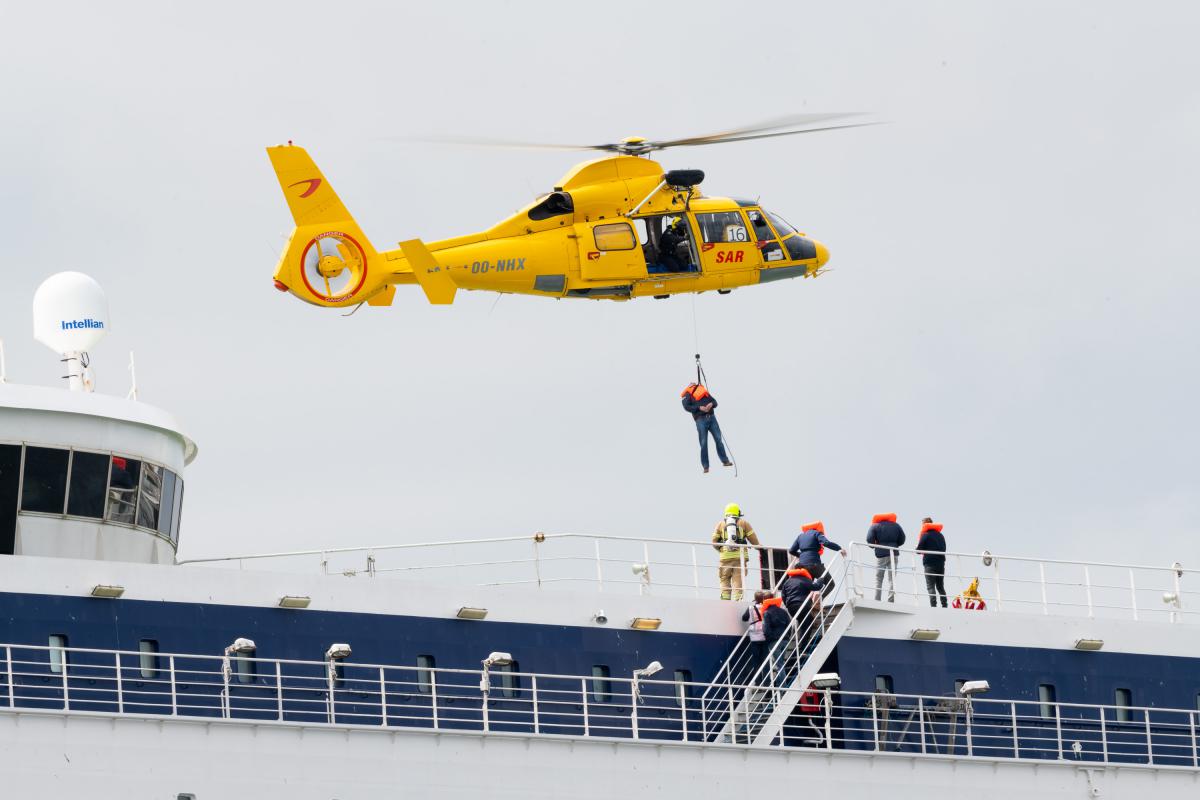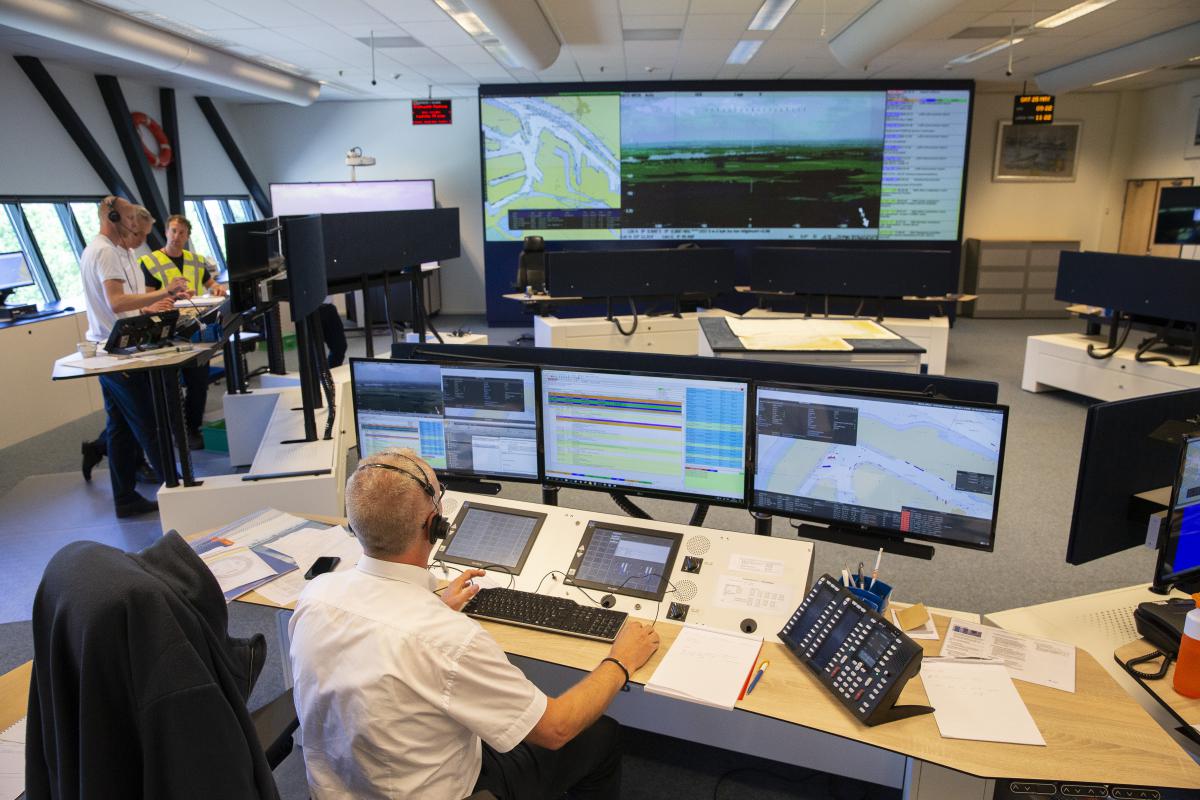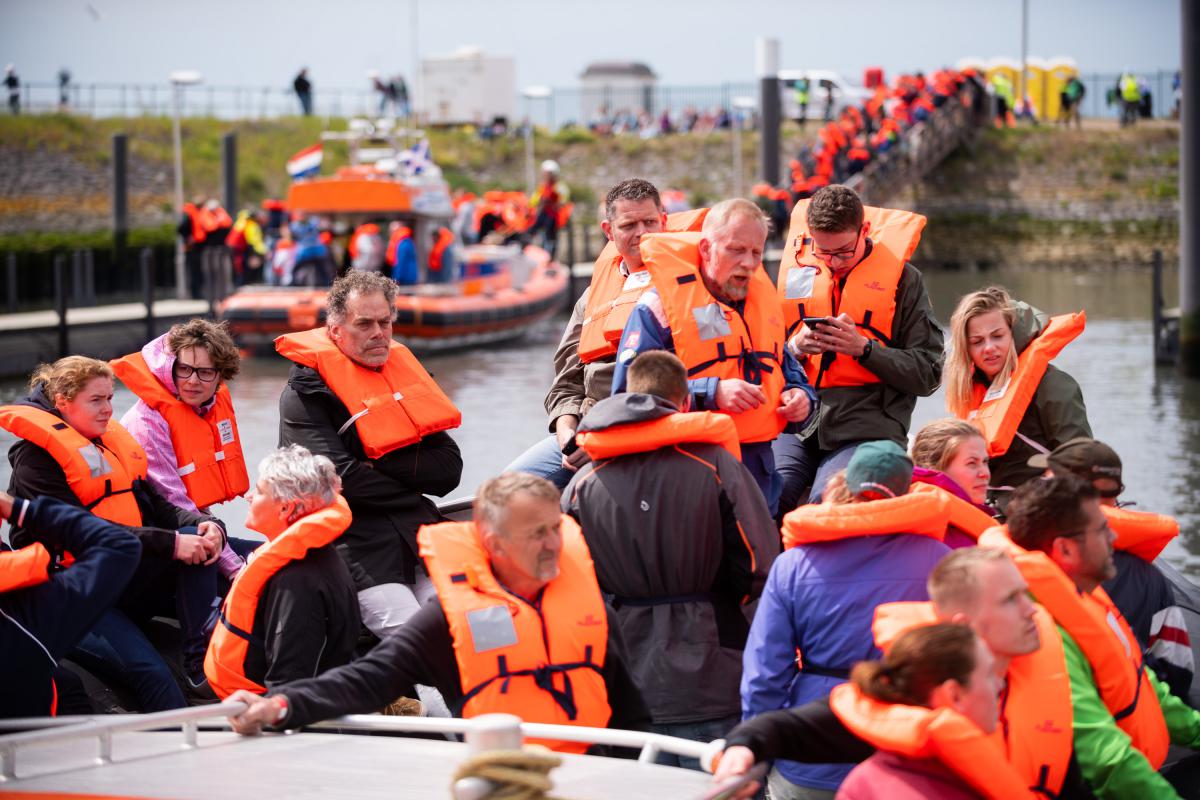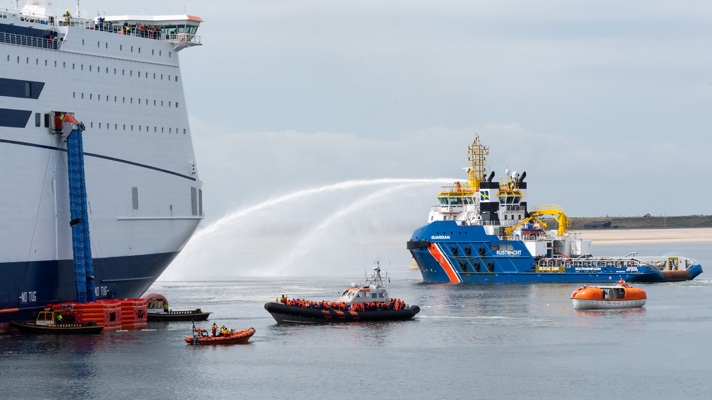During a large-scale mass evacuation exercise, the ferry Pride of Hull was evacuated. Hundreds of extras participated in the exercise, named LIVEX, which allowed different crisis organisations to train together.
The Pride of Hull had sailed to Maasvlakte 2 in Rotterdam, the Netherlands, for just the exercise. Helicopters, ships, lifeboats and vehicles were all deployed for LIVEX and hundreds of extras had signed up. The evacuation on the water was coordinated by the Netherlands Coastguard.

Crisis Coordination and Cooperation
Where the involved (crisis) organisations regularly practise their own part independently, the complete cooperation could now be trained. Therefore, LIVEX focused on communication, coordination and procedures. The Netherlands Coastguard Centre in Den Helder coordinated the evacuation on the water, whereas the Rotterdam-Rijnmond Safety Region accommodated the evacuees ashore. The Ministry of Defence, the Royal Netherlands Sea Rescue Institution (KNRM), the Port of Rotterdam Authority and the Red Cross, among others, also participated in the exercise.

Coordination from the Coastguard Centre in Den Helder.
'Knowing Procedures and the People Is Crucial'
Edwin van der Pol, who was the Chief Exercise Leader was satisfied with the deployment of the units and the sequence of the processes. 'I think we have shown that by means of good cooperation between all the different partners, we are able to evacuate a large number of people from the sea. After today, I will continue to insist that we need to train continuously and that we need to continue meeting each other. Knowing the procedures and the people is crucial for a mass evacuation.'
Large Number of Extras Makes Exercise Realistic
'Many extras have signed up for this special exercise. They have experienced what it is like to stay on the water for a while, for example in a raft. My appreciation and thanks go out to all these people who have given up their Saturday for this! Without this large amount of people, the exercise would not have been realistic,' said Van der Pol afterwards.

Disaster Scenario
The disaster scenario was that a fire had started on board the ferry after a collision. A special firefighting team was deployed by helicopter, but was unable to control the fire. Consequently, the captain decided to evacuate the passengers.
Evacuation Methods
Evacuees were disembarked via an evacuation system and two lifeboats of the ferry itself. In addition, several helicopters were flying to take passengers off the ship. From the water, the passengers went to the Berghaven (Hoek van Holland). The Rotterdam-Rijnmond Safety Region set up a reception location there. Those on board were registered and injured passengers were assisted by the emergency services.
Watch a video of LIVEX 2019 below (commentary in Dutch).
Three Dutch Ministers Present
Minister Cora van Nieuwenhuizen (Infrastructure and Water Management), Minister Ank Bijleveld (Defence) and Minister Ferdinand Grapperhaus (Justice and Security) watched the evacuation process from the water and then watched the relief efforts on land in the Berghaven. The Ministry of Infrastructure and Water Management is responsible for maritime assistance, the Ministry of Defence is the manager of the Coastguard and the Ministry of Justice and Security is responsible for disaster relief on land.








